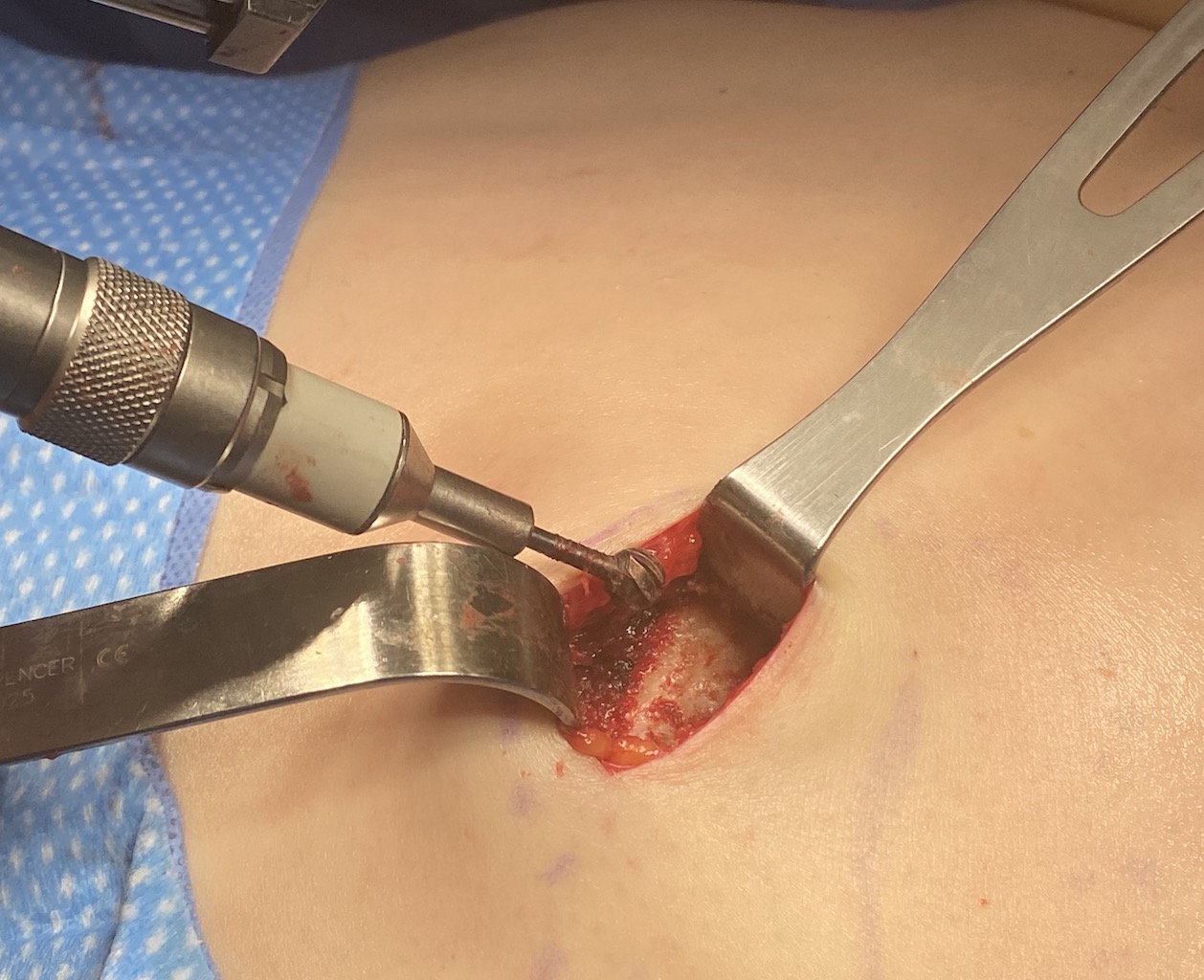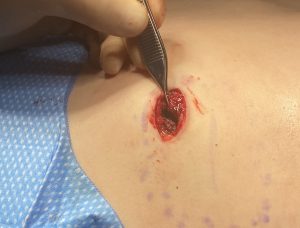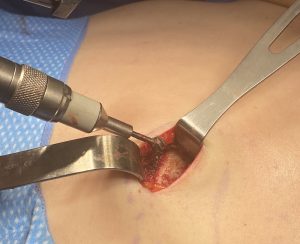One of the most common areas for any ribcage protrusion is the subcostal margin. This is were the cartilaginous portions of ribs 8, 9 and 10 merge to form the bottom part of the lower ribcage below the anterior chest wall. It has a defined edge in which most non-obese people can grab its lower region and get around to the other side. Most people on doing so will feel a rib ‘slip’ which is the unattached cartilaginous rib #9 sliding up over the more fixed rib #8. The subcostal margin has a curved shape which normally is aligned in a relatively smooth contour with the chest wall above and below it.
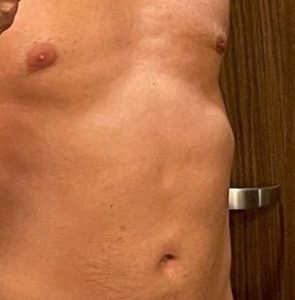
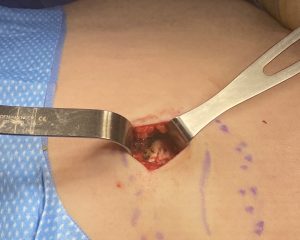
If the patient is young enough the rib cartilages are soft and can be shaved with a scalpel…but the angle is bad for a flat scalpel blade so it is easier and safer for the surrounding skin edges to do so with a high speed rotary burr. In older patients the rib cartilages are partially calcified so this becomes necessary anyway. The ribs are shaved down as much as needed, usually the small incision like a mobile window, but a thin layer of its inner surface is always preserved. This avoids potentially creating the opposite problem…an indentation or contour defect.

The incision and scar for a subcostal rib prominence reduction is in a fairly exposed area that offers no natural relaxed skin tension line for placement. For this reason it is important to keep its length as small as possible and be sure that the patient considers the scar tradeoff a worthy aesthetic exchange.
Dr. Barry Eppley
Indianapolis, Indiana

